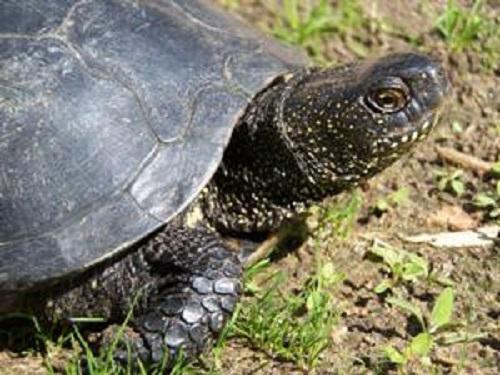Sergey Drobenkov
Other projects
26 Oct 2006
Mini Arribada of European Pond Turtle (Emys orbcularis) at Northern Range Limit in the Southern Taiga Zone. Inventory of Communal Nesting Aggregations And Conservation Of The Biggest European Population (Belarus)
27 Sep 2010
Saving of Abundant Nesting Assemblies of the European Pond Turtle in Belarus: Creation of the Reserve Network and the National Conservation Plan Development
Main objective of our project is study of nesting aggregations distribution of the European pond turtle (Emys orbicularis), identification of the human-related dangers, search and pursuance of priority measures for their steady preservation in Belarus.

The European pond turtle which is present in Belarus.
Breeding biology of the European pond turtle in northernmost range area of the worldwide turtle, in southern Belarus, is characterized by the annual formation of big nesting aggregations (to 300 specimens) in optimum terrestrial habitats, purposeful seasonal migrations and nesting site fidelity of females. These reproductive congregations very similar to seasonal assemblies of large sea turtles (termed by arribada) are unique among fresh-water species in temperate zone. Until recently this phenomenon was not studied. There are no special protective actions for conservation of collective habitats.
The European Pond turtle is only turtle species in many areas of Europe. It is rare threatened species included in Red Book of IUCN (LR:nt category) and a list of rare animals of all European countries. We determine that protection of the breeding habitats and the numerous nesting aggregations is most effective conservation measure for this species in Belarus. Pursuance of the project will provide:
(1) to define a distribution area of mass nesting aggregations, their number, reproductive habitats and patterns of breeding biology of the pond turtle in Belarus on the most northern range limit of world’s turtles in extreme climatic conditions.
(2) to identify the significant threats and number limiting factors in the wild and semi natural boreal forest landscapes.
(3) to continue elaboration of a network of small reserves in areas of the largest female congestions and to provide their reliable protection.
(4) to develop and test new more effective approaches to protection of seasonal nesting assemblies of this freshwater turtle.
(5) to save one of the most viable European populations of nominative subspecies.
(6) to draw attention of the non-governmental and state nature conservation organizations and local societies to rescue of this rare species and unique arribada.
(7) to train several groups of local people to be able to continue the preservation and monitoring of the aggregations in critical periods of egg-laying and migrations.